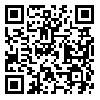2- Physiotherapy Research Center, School of Rehabilitation Sciences, Shahid Beheshti University of Medical Sciences, Tehran, Iran ,
Background and Objectives: Most children with Cerebral Palsy (CP) experience lower limb-related motor disabilities, such as walking, during their lifetime, leading to a reduced quality of life. Given the great importance of walking and its quality in daily activities as well as the independence of the individual in his life, the use of various methods to improve walking in children with CP is of great importance. Among the therapeutic approaches explored, mirror therapy stands out for its foundation in mirror neuron activation. This study aimed to ascertain the influence of mirror therapy on gait performance in children diagnosed with hemiplegic CP.
Materials and Methods: This double-blind randomized controlled trial (RCT) study was undertaken on 20 children with hemiplegic CP. The treatment group (n=10) underwent 20 treatment sessions during 4 weeks. Each session consisted of 30 minutes of routine treatment and 15 minutes of mirror therapy. In the control group (n=10), sham therapy was performed instead of mirror therapy. At the beginning and end of the study, both groups underwent walking assessment via a gait analysis system.
Results: Results revealed that before the treatment, the gait of the two groups did not differ significantly; however, most spatiotemporal gait parameters in the treatment group demonstrated significant improvements post-intervention compared to the control group, with the exception of cadence and stance phase duration, which did not show notable differences (p < 0.05).
Conclusion: According to the results, mirror therapy as a complementary treatment seems to be able to confer a positive effect on improving gait in hemiplegic children.
Received: 2025/02/15 | Accepted: 2023/01/11
| Rights and permissions | |
 |
This work is licensed under a Creative Commons Attribution-NonCommercial 4.0 International License. |




